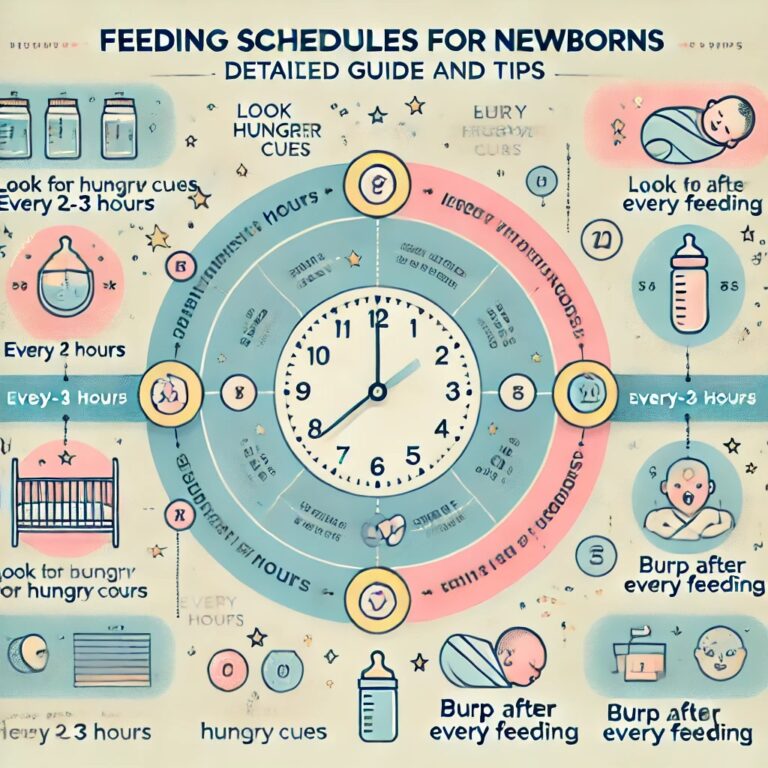Understanding Colic and Effective Soothing Techniques for Babies
Colic is a common condition experienced by newborns that can leave parents feeling overwhelmed and helpless. It typically involves intense, prolonged periods of crying in an otherwise healthy baby. While colic usually resolves on its own, it can be extremely distressing for both babies and their caregivers. This article delves into what colic is, its causes, and various soothing techniques that can help ease the discomfort associated with it.
What is Colic?
Colic is defined as episodes of crying in an infant for more than three hours a day, at least three days a week, for three weeks or longer. These crying spells often happen in the late afternoon or evening and can start when a baby is around two weeks old, peaking around six weeks, and generally improving by the time they are three to four months old.
Though the exact cause of colic remains unknown, it is important to note that colicky crying is different from typical fussiness. Babies with colic cry inconsolably and appear to be in pain. During these crying bouts, they may clench their fists, arch their backs, or pull their legs toward their tummies.
Possible Causes of Colic
There isn’t one clear explanation for what causes colic, but several factors may contribute to it:
- Digestive Issues: One theory is that colic may be related to gastrointestinal discomfort. Some babies may have immature digestive systems, leading to gas, bloating, or sensitivity to milk proteins, which can cause pain.
- Overstimulation: Newborns are constantly exposed to new sights, sounds, and sensations. An overstimulated baby might cry as a way of shutting down or coping with overwhelming stimuli.
- Gut Microbiome Imbalance: Research suggests that an imbalance of gut bacteria may play a role in colic. Infants with colic have been found to have different gut flora compared to those without it.
- Food Allergies or Sensitivities: Some infants might have an allergy or sensitivity to ingredients in breast milk or formula, which could contribute to colic symptoms.
- Parental Stress: Though not a direct cause, heightened stress in caregivers may contribute to a baby’s distress, potentially exacerbating colic symptoms.
Recognizing Colic
Colic is diagnosed based on the “Rule of Threes”:
- Crying lasts for more than three hours a day.
- It occurs at least three days a week.
- The baby has been crying like this for at least three weeks.
During crying episodes, babies may exhibit the following symptoms:
- Red or flushed face
- Clenched fists
- Tension in the abdominal muscles
- Frequent gas passing or bloating
- Stiffening or arching of the back
Soothing Techniques for Colic
While colic eventually resolves on its own, there are several strategies that may help soothe a baby during an episode of colic:
1. Swaddling
Swaddling is one of the most effective techniques to calm a baby. By securely wrapping the baby in a blanket, you recreate the snug, comforting environment of the womb, which can help reduce overstimulation. Swaddling restricts the baby’s movements, preventing them from startling themselves awake and helping them feel more secure.
2. White Noise
White noise mimics the comforting, rhythmic sounds that a baby hears while in the womb. Playing white noise through a machine, an app, or simply running a household appliance like a fan can be very soothing. The consistent sound helps block out external noise and creates a calming environment.
3. Motion
Babies are often comforted by gentle motion, which mimics the movement they experienced in the womb. Parents can try rocking the baby in their arms, using a baby swing, or gently bouncing them on an exercise ball. Stroller or car rides are also effective methods, as the consistent movement can lull a baby into sleep.
4. Tummy Time
Though tummy time is often thought of as a developmental exercise, laying a baby on their stomach can help alleviate colic discomfort. Tummy time allows for gentle pressure on the abdomen, which can ease gas and reduce bloating. For an added soothing effect, place the baby on your chest, allowing them to feel the warmth of your body and hear your heartbeat.
5. Burping
Since trapped gas can exacerbate colic symptoms, frequent burping during and after feeding is important. Keeping the baby in an upright position for 10-15 minutes after feeding can also help prevent gas buildup. Experiment with different burping techniques, such as holding the baby over your shoulder or laying them face-down across your lap.
6. Pacifier
Sucking is a natural reflex that calms babies, and using a pacifier can help soothe a colicky baby. While some babies might resist at first, offering the pacifier consistently can eventually encourage them to use it as a self-soothing tool.
7. Adjusting Feeding Techniques
If you suspect that feeding might be contributing to colic symptoms, try adjusting your feeding practices:
- Bottle feeding: Use slow-flow nipples to reduce the amount of air the baby swallows.
- Breastfeeding: Experiment with different feeding positions to ensure the baby is latching correctly and not taking in too much air. In some cases, switching to a hypoallergenic formula or eliminating common allergens (like dairy) from the breastfeeding mother’s diet may help reduce colic symptoms.
8. Infant Massage
Gently massaging a baby’s belly in clockwise circular motions can help move trapped gas through the digestive tract. Additionally, massaging the baby’s back or legs can provide relaxation and soothe tense muscles.
9. Warm Baths
Warm water has a calming effect and can help soothe an upset baby. A gentle bath before bedtime can serve as part of the bedtime routine, helping to relax the baby and prepare them for sleep.
10. Baby Wearing
Carrying the baby in a soft carrier or wrap can be very comforting, especially when they are feeling distressed. The closeness to the parent, combined with the gentle motion, can help soothe colicky babies. Baby wearing also allows the parent to remain mobile while comforting their child.
When to Seek Medical Attention
Colic is not a medical emergency, but it’s important to rule out other possible causes of distress, such as an infection, acid reflux, or a milk allergy. If your baby shows any of the following signs, consult a pediatrician immediately:
- Fever
- Vomiting
- Diarrhea or blood in stool
- Difficulty breathing
- Failure to gain weight or poor feeding habits
A pediatrician may run tests or suggest changes in feeding practices, and in some cases, recommend medication to alleviate digestive issues like reflux.
Get Colic relief
Colic can be a challenging and exhausting phase for parents, but it’s important to remember that it is temporary and typically resolves by 3-4 months of age. Understanding colic and using a variety of soothing techniques, such as swaddling, white noise, and motion, can help make this period more manageable for both babies and caregivers. By staying patient and trying different approaches, you can provide comfort and relief to your baby during these tough times.
If colic symptoms persist or seem to worsen, consult a healthcare provider for guidance and to rule out underlying health conditions.
------------From our Sponsors------------







